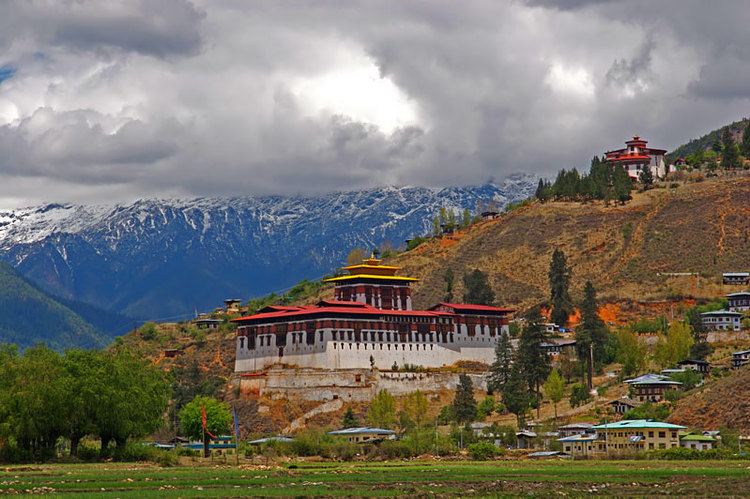Country Population 15,000 | District | |
 | ||
Points of interest | ||
Map of Paro, Bhutan
Paro (Dzongkha: སྤ་རོ་) is a town and seat of Paro District, in the Paro Valley of Bhutan. It is a historic town with many sacred sites and historical buildings scattered throughout the area. It is also home to Paro Airport, Bhutan's sole international airport.
Contents
- Map of Paro Bhutan
- Most difficult landing in the world bhutans paro airport in winter rain
- The best extreme approach video of paro airport bhutan please watch hd and full screen
- History
- Architecture
- Airport
- References

Most difficult landing in the world bhutans paro airport in winter rain
The best extreme approach video of paro airport bhutan please watch hd and full screen
History
Rinpung Dzong a fortress-monastery overlooking the Paro valley has a long history. A monastery was first built on the site by Padma Sambhava at the beginning of the tenth century, but it was not until 1644 that Ngawang Namgyal built a larger monastery on the old foundations; for centuries this imposing five-storey building served as an effective defence against numerous invasion attempts by the Tibetans.
Built with stones instead of clay, the Dzong was named Rinpung, meaning "heaps of jewels" but Rinpung and all its treasures were destroyed by the fire in 1907. Only one thangka, known as Thongdel, was saved. The Paro Dzong was rebuilt by the penlop dawa Penjor after the fire. Housed within its walls is a collection of sacred masks and costumes. Some date back several centuries; others were contributed by Dawa Penjor and his successor Penlop Tshering Penjor in recent times.
On the hill above the Dzong stands an ancient watchtower called Ta Dzong which since 1967, has been the National Museum of Bhutan. Across a medieval bridge below the Dzong stands the Ugyen Pelri Palace, a royal residence constructed by penlop Tshering Penjor.
Architecture
Along the main street there is a complex of traditional architecture with richly decorated buildings housing small shops, institutions and restaurants.
The Dungtse Lhakhang is a 15th-century temple near the new bridge, and the Ugyen Perli Palace is visible through the fence. Members of royal family lodge in the palace when passing. Nearby is the old bridge by the Rinpung Dzong. Notable hotels include the Olathang Hotel built in an ornate style.
About 10 kilometres (6 miles) outside Paro is the famous Taktshang (Tiger’s Nest) Hermitage on the face of a sheer 1,000-metre (3,281-foot) cliff. The place is highly sacred to the Bhutanese in that they believe Guru Rinpoche, the father of Bhutanese Buddhism landed here on the back of a tigress. The trek to Tiger's nest monastery takes about three hours one way. A scenic view of the town of Paro can be seen from the Tiger's nest. A 16-kilometre (10-mile) road passes up the valley to the ruins of another fortress-monastery, Drukyel Dzong, which was partly destroyed by fire in 1951.
Paro is home to Bhutan's tallest building, the Ta-Dzhong, which is 22 meters (72 feet) high, and has 6 floors. It was completed in 1649.
Airport
Paro Airport has been described as "the most difficult commercial airport in the world", The airport has only one runway. Airplanes on approach pass by 5,500m Himalayan mountain peaks, and the 1,980m runway length presents a double challenge, due to the extremely low density altitude at the site. As a result, only a handful of airline pilots (8 as of December 2014) are certified to operate commercial airplanes there. About 30,000 persons arrive at the airport each year.
